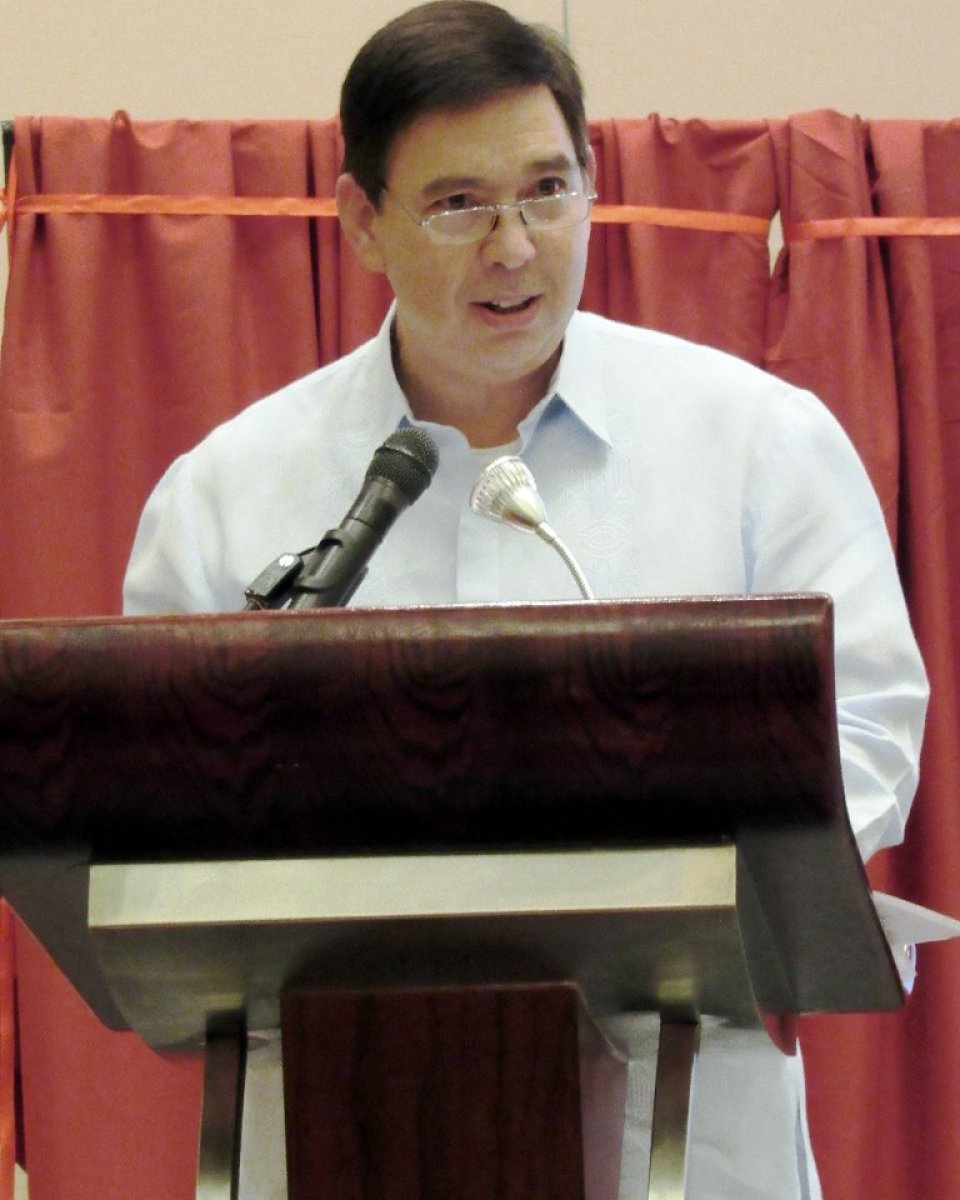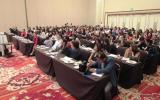Time to Boost Govt Spending for Oral Health: A State of the Ngipin Address (SONA)
“Para Sa Batang Pinoy”
2015 National Congress on Oral Health for Filipino Children
Philippine Pediatric Dental Society, Inc.
Thank you for that kind introduction. Magandang umaga po sa inyong lahat.
I am supposed to be in a meeting that will establish the Mamasapano timeline, which we are having a hard time putting together because getting information from our guests is like pulling their teeth.
But I have to be here for three reasons:
First, when your dentist tells you to open your mouth, you must.
Second, when you speak before a group of dentists, you get a plaque.
Third, I am keen on hearing the SONA – or the State of Our Ngipin Address – of your officers.
And another reason is gratitude. Without dentists, politicians will have no political careers.
A candidate’s first stop after he had thrown his hat into the ring is the dental clinic – for that toothpaste commercial smile. In designing campaign posters, pimples can be Photoshopped but not the teeth.
And if he wins, his first stop after his inaugural is again the dentist’s chair because if he has to lie through his teeth, then it better be through pearly whites.
Seriously, your kind invitation has prodded me to look at the state of public spending for oral health, and what I’ve discovered hurts – like an impacted tooth.
Even data on oral health is hard to find, bungi-bungi, or like searching for a tiny speck of caries in hard-to-reach cavities.
And public health spending, as I would later share, is no bigger than a microscopic morsel lodged in the molar
These, despite the fact that mouthwash commercials carpetbomb us on TV every day. We know more about toothpaste brands than our state of the ngipin.
Let me bore you with statistics, something I encounter only on paper but you in real life:
87 percent of Filipinos suffer from tooth decay.
Among 6-year -olds, 97 percent have dental caries, and 85 percent show symptoms of dental infection.
Among 12- year-olds, 79 percent suffer from dental caries or decay, 74 percent suffer from gingivitis.
One in two Filipinos manifest gum problems.
In the 2011 National Monitoring Evaluation Dental Survey, however, the prevalence of dental caries among 5 year olds has decreased to 88 percent.
Of this, urban children had a very high prevalence of almost 91 percent while it was detected in 84 percent of rural children.
Gender-wise, 7 in 10 women have missing teeth. It is 5 in 10 for men. Even in the number of missing teeth, women trump men: An average 8 missing teeth for females, while 4 for males.
My theory on this is that while men can only bark, women bite. Is this the situation in the Recto household? I would not confirm nor deny. For fear of having my teeth knocked out…by my wife.
As a result of dental problems, 1 in 7 absent from work or school at least once a month. 1 in 10 fail to go to school or work at least twice a year.
Multiply this with 25 million in schools and 39 million employed in the labor force and the result is millions of man hours or study time lost to aching teeth.
The economic losses – and someone should tally this – run into billions of pesos annually.
Despite these, only 1 in 10 see their dentist twice a year. 3 in 10 once a year. And 1 in 4 went to their dentist only because they were already reeling in pain.
At ano ang mga dahilan kung bakit hindi sila pumupunta sa dentista?
The survey says:
64 percent takot sa gastos. 10 percent takot sa bunot. 10 percent takot umabsent sa trabaho. 9 percent nagse-self-medicate.
The above illustrates the correlation between income and oral health. No wonder, the rich can flash their toothpaste commercial smiles. The poor can only manage a toothless grin.
But that should not be the case if only we will bring dental health from the margins to the mainstream of public spending.
For example, for this year, the Department of Health budget is P87. 6 billion. Itemized ang gastos: P83.6 million for RATA, P117 million for mail, talk and text, and Internet.
But sadly there’s no disclosure on how much is for oral health.
There is no line-item specific to oral health. Mabuti pa ang filariasis indicated doon.
The DoH has even bean-counted the number of medical manpower hours they will render this year: 1 billion, 64 million, 46 thousand, and 376 hours.
Is this attention to detail applied to dental health? No.
Perhaps it was done so because the allocation for dental health is too small to measure: The National Center for Disease Prevention Control was allocated P23.6 million to push the Oral Fit Child program in 2013.
Its budget for commodities, like dental sealants and filling materials, for pre-school kids was P35 million last year.
Ganun din ang nangyayari sa DepEd.
If DepEd were a country its combined teacher -student population of 21.5 million would rank it as the 59th most populous in the world.
It is bigger than Netherlands, than Cuba, and Chile. It is two times bigger than Portugal, Greece or Bolivia.
Yet it only has 300 dentists, or a ratio of one for every 70,000.
One school division on the average has two dentists. And there are many divisions where a dentist with a province-wide scope is given a mere P1,000 a month for supplies and travel.
Speaking of supplies, do you know that DepEd spent a measly P37.5 million for medical and dental supplies in 2013? Or a per student spending of less than two pesos a year?
If one-fourth, or about P9 million, of its medical supply expenditures in 2013 went to its dental service, an estimate which, by the way, is a very charitable one, then that amount is half of what the DBM paid its janitors that year.
Even the DND spent twice more for the care of the dogs in its K-9 units.
Kung meron tayong 20 milyong istudyante sa DepEd at ang kalahati ay bibigyan mo ng tig-kinse pesos na sepilyo, ang P150 milyon ay katumbas lamang ng communication expenses ng Department of Agriculture sa isang taon.
Or kung bibili ka ng P100 million worth of toothpaste, katumbas lang yan ng ginasta ng DAR sa gasolina noong 2013.
If we cut the national government’s travel budget this year by just 5 percent, it will free P700 million for the purchase of dental equipment.
Or if the national government is willing to fork over P75 billion a year to the proposed Bangsamoro enclave then why can’t it not allocate a fraction of this for oral care?
Oo nga ‘no? We can’t have one region armed to the teeth while the rest is plagued with dental problems.
But for as long as oral and dental health care remains a hidden account in the national budget, it will not be able to draw the attention it rightfully deserves.
Thus, its years of being incognito must end. It is time for dental health to surface in the pages of the general appropriations bill.
This marginalization should also cease to exist in our national health insurance system.
If dental health will be benchmarked in the 2.6-trillion-peso-and-still-growing national budget, then it will serve as a vessel which can draw not only budgetary attention but augmentation as well.
Halimbawa na lang sa recruitment ng dentists. Meron lang tayong 1,718 government dentists nationwide, na talaga namang kulang.
Kung nakasaad sa budget ang dental health bilang isang programa, either in DepEd or in the DoH, we can direct specific funds to it, especially on personnel recruitment.
And why shouldn’t we?
If every 1,000 days we hire, through costly elections, 12 senators, 292 congressmen, 81 governors and vice governors, 143 city mayors and vice mayors, 1,491 town mayors and vice mayors, 11,932 town councilors so why can’t we hire more dentists?
There are 3,556 elected public officials per 1 million Filipinos. In contrast, there are only 18 public dentists per million.
However, when we push for more money for oral care, it shouldn’t be seen as an advocacy for increased pasta-pustiso-bunot funding.
Rather it should be viewed as a campaign for bigger resources for holistic, practical, and comprehensive oral health programs which place a premium on preventive rather than curative care.
The best prophylactic is still knowledge, and this can be pursued in many fronts like raising the profile of oral hygiene in the basic education curriculum.
This however would require upstream solutions like provision of clean water, for though we can dry-clean our clothes we can’t brush our teeth without water.
In line with this, I agree with you that we have to increase fluoride concentration in water because in one survey, out of 131 samples, 126 showed presence below what is optimal.
One other simple preventive scheme is to tighten the ban on the sale of softdrinks and sugary beverages in campuses not only from the oral care point of view but out of obesity concerns.
Schools should remain soda-free zones. Campuses are not sugar centrals.
A holistic dental health program is not about deploying dentists who can do root canals. It is going to the root of the problem, which, when attended to, renders root canals unnecessary.
And this includes nutrition, because nothing destroys the teeth more than hunger.
The increasing number of GNP – or Gutom na Pilipino – relies on sugary ulam substitutes. Malnutrition stunts growth, emaciates the body, and weakens the teeth.
We have to restore oral health programs as a line item in the budget because we cannot allow the 2 million Filipinos born every year to join us without dental care cover.
Yes that’s 2 million a year. Or about 5,479 a day. Or seven babies in the two minutes that we brush our teeth.
Or three babies if we finish brushing in one minute because your wife or husband is calling you to hurry to bed because a pirated copy of 50 Shades of Grey is about to be played.
On that sexy note, to this hall full of Mr. Grey and Ms. Steele lookalikes, let me thank you and wish you well. Together let us work to give our countrymen a reason to smile.
Maraming salamat po at magandang umaga.










